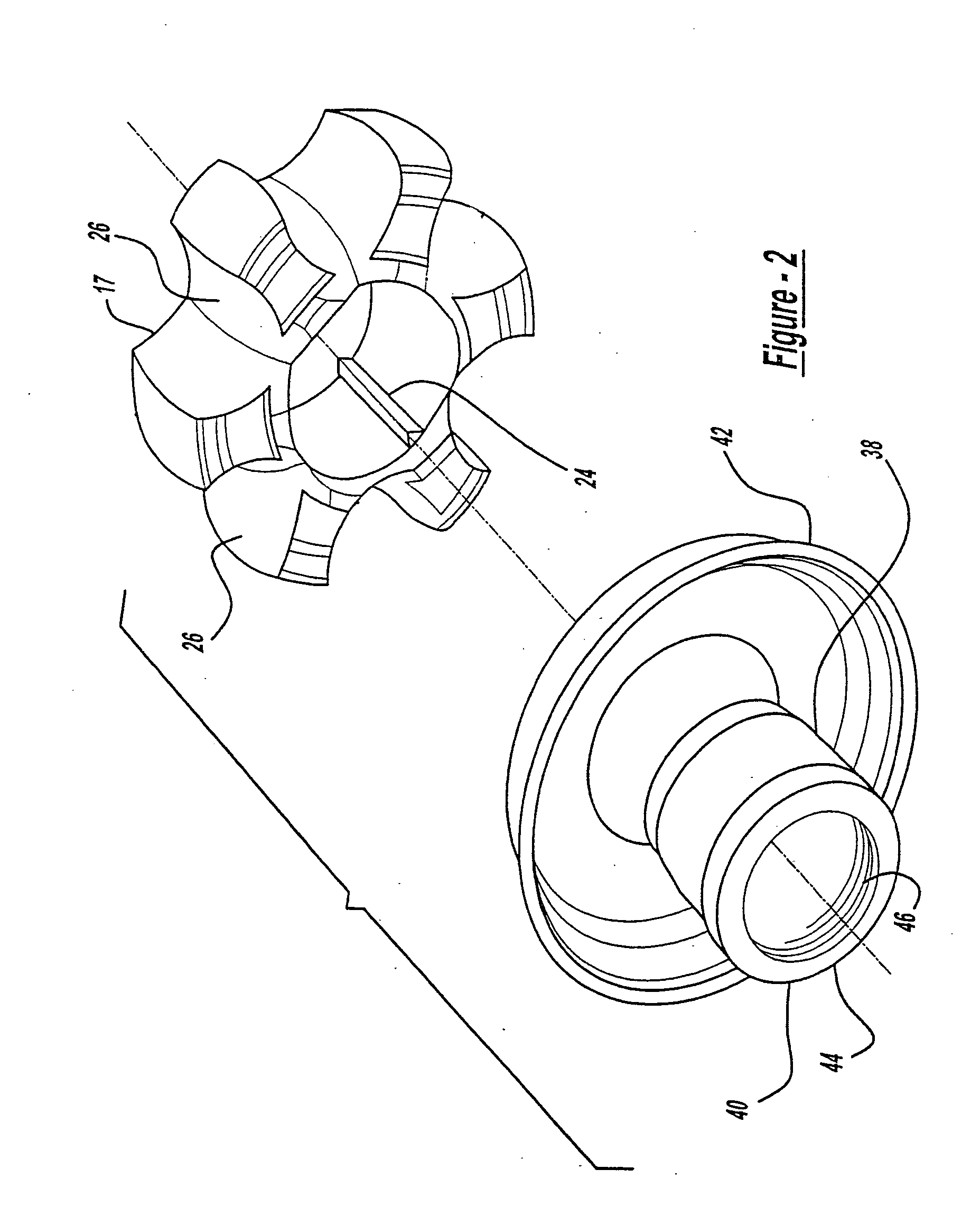Constant velocity joint assembly and sealing boot
a constant velocity joint and sealing technology, which is applied in the direction of engine sealing, yielding couplings, couplings, etc., can solve the problems of premature failure, high operating angle, and high temperature of constant velocity joints, and achieve constant velocity, improve sealing, and increase the stability of constant velocity joints
- Summary
- Abstract
- Description
- Claims
- Application Information
AI Technical Summary
Benefits of technology
Problems solved by technology
Method used
Image
Examples
Embodiment Construction
[0025] Referring to the figures, there is shown a constant velocity joint and shaft assembly 10 according to the invention. The assembly 10 includes a constant velocity joint 12 for transmitting torque between a first shaft 14 and another component such as a second shaft 16. One of the shafts 14 or 16 may be a drive shaft such as a propeller shaft. The joint 12 includes a first joint part such as an inner race 17, a second joint part such as an outer race 18, and a ball cage 20 disposed in an annular space between the races 17 and 18. While the joint 12 is configured to operate through a wide range of angles, FIG. 1 shows the races 17 and 18 and ball cage 20 aligned along a common central axis 22.
[0026] As shown more particularly in FIGS. 2-3, the inner race 17 is slidably connected to the first shaft 14 in any suitable manner. For example, the inner race 17 may be provided with a splined opening 24 that mates with a splined outer surface 25 of the first shaft 14. With such a confi...
PUM
 Login to View More
Login to View More Abstract
Description
Claims
Application Information
 Login to View More
Login to View More - R&D
- Intellectual Property
- Life Sciences
- Materials
- Tech Scout
- Unparalleled Data Quality
- Higher Quality Content
- 60% Fewer Hallucinations
Browse by: Latest US Patents, China's latest patents, Technical Efficacy Thesaurus, Application Domain, Technology Topic, Popular Technical Reports.
© 2025 PatSnap. All rights reserved.Legal|Privacy policy|Modern Slavery Act Transparency Statement|Sitemap|About US| Contact US: help@patsnap.com



